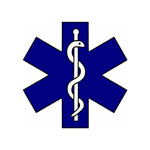Welcome to scrapes Guide
Fireengine Scrapes Car In Parking Lot Article
 To bookmark this article for further reading, click here.
To bookmark this article for further reading, click here.
The Importance Of First Aid When Hunting Buck Scrapes
Anytime you go into woods where there is deer you are bound to come across buck scrapes. These are areas of the ground that have been scraped by bucks.
There should be gnarled branches and bark missing on trees where buck scrapes have occurred. Even if you are only looking for scrapes, carrying a first aid kit that you know how to use is advisable.
Unexpected Dangers When Hunting Buck Scrapes
When hunting buck scrapes there are a number of accidents that could occur. A branch could fall from a tree. A protruding, unseen object such as glass, metal or a sharp branch could cause a scrape or cut.There is even the possibility that you could come across another hunter who has been injured and is unable to help themselves. The best way to prepare for the unexpected dangers that lurk in the wilderness is to carry a hunter’s first aid kit and know how to administer first aid.
A good hunter’s first aid kit will include a whistle, a space blanket, two small working flashlights, a small mirror, a clean towel, antibiotic ointment, antiseptic towelettes, wound closure strips, small scissors’, medical tape, latex gloves and sterile gauze pads.
Be A Hero When Accidents Happen While Hunting Buck Scrapes
Having the needed supplies on hand and knowing what to do should an accident happen can make you a real hero. What better hunting story than one that tells how you helped an injured hunter, even if it was yourself?Before you venture into the woods, consider taking a wilderness survival course, a first aid or CPR course, than stock your first aid kit and carry it with you. Knowing the difference between a minor cut or scrape and one that is life threatening is important.
While it is true the first step is to try to stop the bleeding, if an artery or vein has been severed, getting the injured person professional medical care should be the main focus.
If the cut or scrape is minor, place a clean cloth on the wound and apply pressure for fifteen minutes. If the bleeding has stopped clean the wound, if not, reapply pressure.
Once the wound is cleaned, apply an antibiotic cream and cover the wound with sterile gauze pads making sure to seal the edges so dirt cannot enter the wound. Once you are home, check the wound again to make sure it was well cleaned.
Reapply the dressing daily. If the dressing should get wet or soiled, redress the wound immediately.
Even simple tasks like hunting buck scrapes can bring about unexpected situations where a first aid kit can come in handy. But remember, knowledge is just as important as the supplies.
When an accident happens you need to be prepared to respond immediately, especially when one happens in remote locations such as areas where one would look for signs of buck scrapes.


